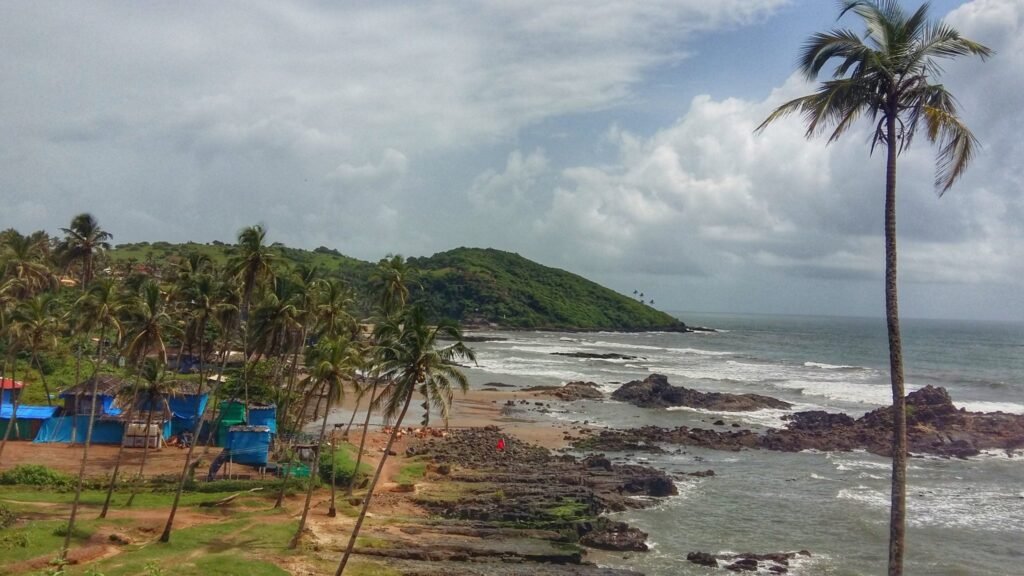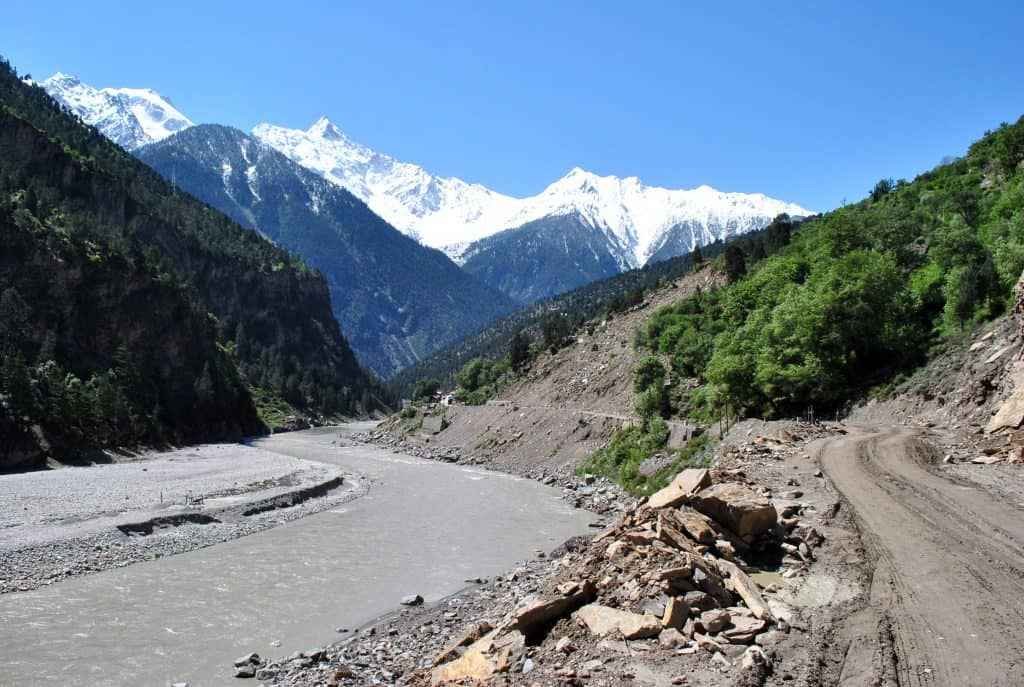
India is one of the most diverse and beautiful countries in the world. With mountains in the north, beaches in the west and east, and lush greenery in the south, it attracts travelers from across the globe throughout the year. However, not all months are ideal for travel, especially when the monsoon season hits in full swing during July. While some travelers romanticize the idea of rain-soaked streets and misty mountains, the truth is that many popular Indian destinations become risky and inconvenient during July. From landslides in the hills to flooded streets in cities, monsoon-related disruptions can easily ruin a well-planned holiday.
This guide is all about the places to avoid in India in July if you want a safe, enjoyable, and stress-free vacation. The monsoon is essential for the environment, but it can pose serious challenges to travelers. Knowing where not to go in July will help you plan better and make the most of your time in India.
The Indian monsoon, which usually begins in June and continues till September, brings life to dried rivers, fills up reservoirs, and gives a fresh look to the landscape. However, the same rainfall that supports farming and greenery also causes natural disasters like floods, landslides, and road blockages, especially in mountainous and coastal areas. Public transport becomes unreliable, roads turn muddy or get washed away, and travel itineraries can fall apart due to weather alerts and safety issues. In such situations, avoiding certain locations during July becomes not just a smart choice, but a necessary one.
Kerala’s Munnar and Wayanad: Too Wet to Wander
Although Kerala is often referred to as “God’s Own Country” because of its natural beauty, the state receives heavy rainfall during July, making travel uncomfortable and even dangerous. Two popular hill stations in Kerala — Munnar and Wayanad — become particularly challenging during this time. Due to the consistent downpour, roads leading to these areas are often affected by landslides and slippery conditions, which make driving risky. Fog reduces visibility, and the scenic views you hoped to enjoy may be completely hidden by dense clouds.
Moreover, trekkers should avoid these destinations as trails are closed due to flood risks and leech infestations. Even though the rain adds charm to the landscape, it’s best to wait until October to March, when the climate is far more tourist-friendly and stable.
Darjeeling and Kalimpong: Himalayan Charm Lost in the Mist
Darjeeling and Kalimpong, two of the most loved hill stations in West Bengal, offer stunning views of the Himalayas during clear weather. But July is not the time to visit. These regions receive relentless rainfall, which makes outdoor activities almost impossible. Landslides are common, often cutting off road access to these towns. The popular toy train rides are frequently canceled due to safety concerns.
The roads can become muddy and treacherous, while fog limits visibility so severely that you may not even catch a glimpse of the famous Kanchenjunga peaks. Wait until March to June or October to December if you want the best experience in these serene towns.
Meghalaya’s Shillong and Cherrapunjee: Rain-Soaked and Risky
Meghalaya, especially the towns of Shillong and Cherrapunjee, is known for its rainfall. In fact, Cherrapunjee is one of the wettest places on Earth. During July, these areas experience non-stop heavy rain, which can make your travel extremely uncomfortable. Roads flood easily, sightseeing becomes a challenge, and the usual peace of the hills is replaced by weather warnings.
Waterfalls that usually attract tourists become dangerously overflowing, and the risk of road accidents increases. Even though Meghalaya looks beautiful during the rains, it is advisable to plan your trip between October and April, when the rain subsides and the skies open up for adventure and photography.
Goa: No Fun Without the Sun
Goa, the party capital of India, is loved for its sandy beaches, nightlife, and laid-back vibe. But come July, and Goa becomes a completely different place. The rains are strong, and seas are rough, making swimming and water sports unsafe. Most beach shacks, especially in North Goa, shut down due to the monsoon.
Travelers who visit in July often find that Goa’s most exciting activities like banana boat rides, parasailing, and beach hopping are closed. The weather is also hot and humid, making sightseeing uncomfortable. If Goa is on your list, plan between November and February, when the beaches are vibrant, and the nightlife is alive.
Udaipur and Mount Abu: Unexpected Rains in the Desert State
Many tourists believe that Rajasthan is dry throughout the year, but Udaipur and Mount Abu actually receive moderate to heavy rainfall in July. Streets in the beautiful lake city of Udaipur often get waterlogged, while the usually calm Mount Abu experiences fog and slippery hiking trails.
Since these destinations rely heavily on outdoor sightseeing, the monsoon makes them less enjoyable. Popular spots like Lake Pichola, City Palace, and Dilwara Temples lose their charm under cloudy skies. Plan your Rajasthan trip between October and March for a more enriching experience.
Manali and Kullu: Risky Himalayan Escapes
Manali and Kullu, the crown jewels of Himachal Pradesh, attract thousands of tourists every year. However, these areas become highly unsafe during July. The region is vulnerable to landslides, cloudbursts, and flash floods, especially along the roads connecting to Delhi and Chandigarh.
Power cuts and poor mobile connectivity become common, and several tourist attractions and adventure sports activities are shut down. If you’re hoping to enjoy paragliding, rafting, or snow treks, July is not the month. It’s safer and more rewarding to visit between April and June or post-monsoon in September to November.
Rishikesh and Haridwar: Monsoon Disrupts Spiritual Vibes
Located on the banks of the Ganga River, Rishikesh and Haridwar are famous for spiritual retreats, yoga camps, and adventure activities. But during July, the river swells to dangerous levels, making activities like rafting and river camping impossible.
Pilgrimage routes are also affected by landslides, while temples near riverbanks may remain closed during high flood alerts. The risk of getting stranded or facing health issues due to poor hygiene and waterlogging is high. These destinations are best enjoyed from February to May and again from September to November, when the skies are clear and the river is calm.
Sikkim: Nature’s Beauty Hidden Under Rain Clouds
Sikkim, a jewel of northeast India, is usually breathtaking with its lush valleys, monasteries, and snow-capped peaks. But during July, the state suffers from heavy rains, road blockages, and landslides, especially in North and East Sikkim. Travel becomes extremely difficult, and permits to key areas like Nathula Pass are often denied due to safety concerns.
Scenic drives and treks become hazardous, and the weather makes it nearly impossible to enjoy the beauty of the state. For a memorable and safe journey, plan your Sikkim visit between March and June or October to December.
Andaman & Nicobar Islands: Cyclones and Closed Beaches
The Andaman and Nicobar Islands are famous for clear waters, snorkeling, and exotic marine life. But July is when these islands are at risk of cyclonic weather and high tidal waves. Ferry services get canceled without notice, and flights are often delayed.
Beaches remain off-limits, and activities like scuba diving and sea walking are suspended. Travelers may end up staying indoors most of the time. To make the most of your beach holiday, head to these islands from November to April, when the sea is calm, and the skies are blue.
Mahabaleshwar and Lonavala: Pretty but Problematic
Mahabaleshwar and Lonavala, two scenic hill stations near Mumbai and Pune, look enchanting during the monsoon with lush greenery and overflowing waterfalls. But July often brings excessive rain, slippery slopes, and traffic jams, especially on weekends.
Dense fog reduces visibility, and hiking trails become too dangerous. While the misty landscape looks beautiful in photos, the risk of landslides and falling trees makes it less than ideal for a stress-free vacation. If you want to explore these destinations, wait until October to February, when the weather is dry and safe.
Safe and Scenic Alternatives for July
If you’re looking to travel in July but still want to avoid the chaos of the monsoon, consider Ladakh, Spiti Valley, Coorg, Tawang, or Valley of Flowers. These destinations either fall in rain-shadow areas or transform beautifully during the monsoon without posing major travel risks. They offer breathtaking views, fewer crowds, and a pleasant climate during the season.
The monsoon may paint India in beautiful shades of green, but it also brings travel risks that shouldn’t be ignored. Choosing the wrong destination in July can mean cancelled plans, closed attractions, and dangerous travel conditions. By avoiding the places to avoid in India in July, you not only protect your travel investment but also ensure your health and safety.
So this July, do your homework before packing your bags. Pick places that are safe, scenic, and suitable for monsoon travel. Because the best journeys are the ones where you feel safe, dry, and fully present in the moment.


































